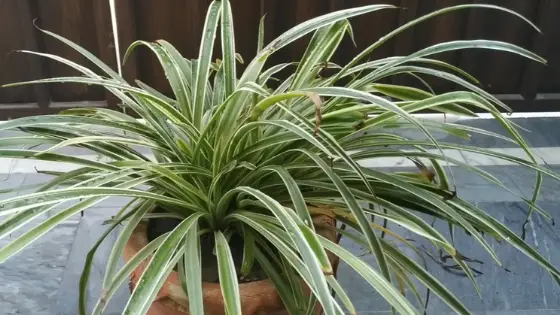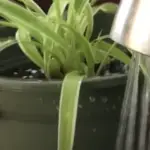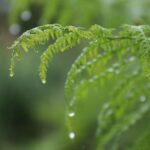We live in the age of information, and there is almost too much information to process at any given moment. Have you found yourself asking the question “Why are my spider plant leaves turning yellow and brown?” today? If so, then you’ve come to the right place.
Table of Contents
Why Are My Spider Plant Leaves Turning Yellow And Brown?
Excess salts or chemicals found in tap water, such as chlorine, fluoride, and soluble salts, are known to be toxic to spider plants. Brown tips or yellow leaves will appear if they build up in your plant’s soil and penetrate into the roots and plant material.
7 Factors That Cause Spider Plant Leaves to Turn Yellow and Brown
Water Stress as a Result of Tight Growing Conditions
Water stress is typically the primary cause, and while most people who own these plants are aware that they should not be left in standing water, what can happen is that the roots can become so overgrown for the pot that they block the drainage holes. This can happen if the pot is too small for the plant’s roots.
If the drainage holes of a container for a spider plant are blocked, the plant may become waterlogged, which will put it under stress. Check the underside of your spider plant as soon as you detect the leaves yellowing to ensure that the roots aren’t pushing through the drainage openings.
If such is the case, it will only be a matter of time until the plant’s leaves turn brown and the condition of the plant deteriorates further.
The leaves of the plant will ultimately turn a dark brown color if it is allowed to remain in a container that is too small for the roots of the plant. After that, the leaves will darken to the color of death, which is black.
If you observe that the roots of your spider plant are blocking the drainage holes on the bottom of your plant pot, you may avoid the worst-case situation by repotting your spider plant into a container of a larger size that is more appropriate for it.
Read more: Why Is My Spider Plant Pale And Limp?
Excess Fertilization
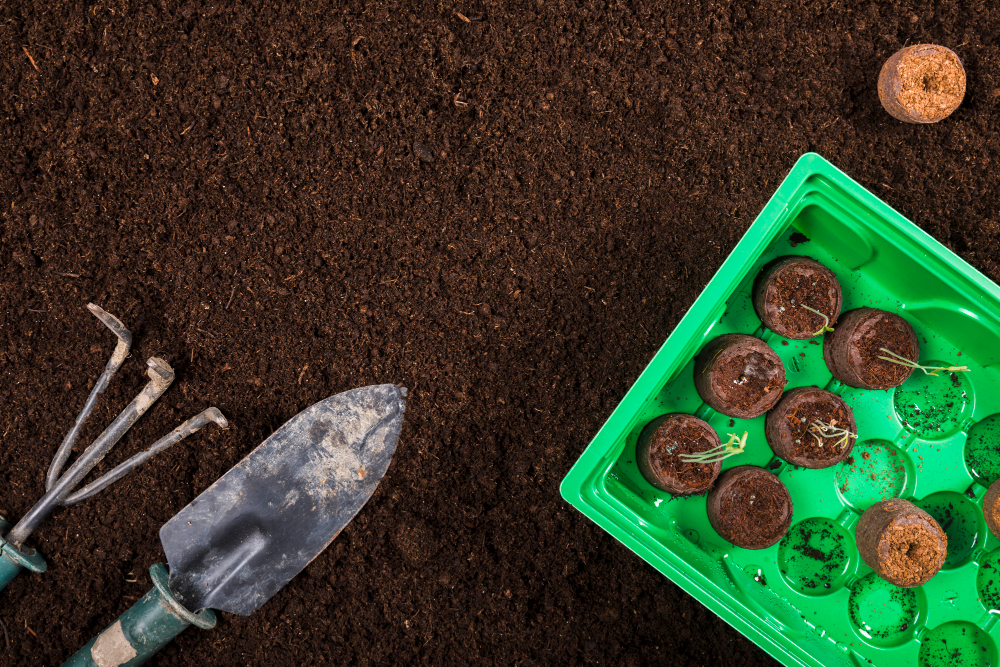
Fertilizing a spider plant is a practice that is prevalent among indoor growers and can be seen as beneficial to the plant’s overall growth. If you are growing a spider plant indoors and you are using fertilizer, there is a good probability that you are giving it liquid fertilizer once per month while it is in its growing season.
It is recommended to use a slow-release pellet fertilizer for spider plants that are planted outside, such as in hanging baskets; this type of fertilizer is mixed into the soil at the beginning of the growth season, and you will only need to fertilize your plants once each year.
It is not necessary to give the plant an excessive amount of fertilizer for it to experience problems related to over-fertilization. Each time fertilizer is added to the soil, it adds minerals, one of which is salt. It’s possible for the levels to build up to the point where they block the plant’s ability to take water from the soil.
Examining the surface of the soil or the area surrounding the drainage holes of the plant for the accumulation of white specks that resemble salt is one technique to determine whether or not this is occurring. If one of these conditions is met, it is quite likely that the soil in question requires leaching in order to have harmful quantities of salt removed.
When applying fertilizer to stimulate the growth of spider plants, it is best to leach the soil once per year. This will provide optimal results.
When there is an accumulation of toxic salt in the soil, which prevents the plant from absorbing water from below, the plant will start drawing water from the tips of the leaves. This is likely the reason why you are only noticing yellow or brown coloring at the tips of your spider plant’s leaves rather than across the entire leaf.
Read more: How Do You Bring A Spider Plant Back To Life?
How to Remove Salt from Spider Plant Soil
You only need warm water and a place to flow the water through the plant without making a mess on the floor. If you’re indoors, you may use the bathtub, shower, or sink if it’s big enough for your spider plant.
If you have a big plant, you might want to move it outside to a patio where you can spray it down with warm water from a hose. If you are going to use a garden hose, you will need to make sure that it is hooked up to a source of hot water. Flushing the soil with cold water is not recommended since it may induce plant shock.
To ensure that the water is able to flow freely through the drainage holes, the container has to be elevated above the surface. As the warm water is flushed through the soil, it will transport the salts out of the drainage holes, so ensure that there is sufficient room beneath the pot for water to flow out freely.
It is advised that you use twice as much water as the container is capable of holding in total. To illustrate, in order to extract the salts from the soil using a nursery pot with a capacity of 2.5 gallons, you would need to utilize 5 gallons of water. Slowly pouring on warm water will give it enough time to drain.
When watered too quickly, excess water might accumulate on the surface. Slowly water the soil up to a maximum of twice the quantity of water that the container’s capacity can hold to prevent pools of water from forming on the surface.
At the very least, the soil should be flushed once annually; however, it is preferable to do so two to three times annually to prevent salt accumulation in the soil to the point where it causes the spider plant to become yellow or brown.
The discoloration of your spider plant may be fixed by leaching the soil, which can also be done as a kind of preventative maintenance to keep the soil fresh.
Read more: Why Are My Spider Plant Leaves Creasing?
Indoor Humidity in the Winter

Spider plants require a relative humidity that falls somewhere around the middle. During the warmer months, this may be readily accomplished by consistent watering and spraying on days when the temperature is higher. However, during the winter months, humidity levels drop, and this can cause the tips of spider plants to become brown.
If you observe brown tips on the leaves of indoor spider plants or those being overwintered indoors, check the humidity levels.
If so, spray your plant more often, and if the size and weight of your plant are doable, try relocating it to the bathroom when the shower or bath is used so that it may take advantage of the greater humidity that is present in the bathroom during those times.
Read more: How Often Do You Water a Spider Plant?
Sunburn
When spider plants get sunburned, the tips of their leaves become brown. This is due to the blade-like form of the leaves, which allows moisture to trickle down to the tips.
When the plant is in direct sunlight, water builds up at the tips of the leaves. When the water heats up, it burns the tips of the leaves, making them brown.
Avoiding prolonged sun exposure is the only known method of protection against this. Spider plants love partial shade and should be placed in a location that gets indirect sunlight.
Higher temperatures can cause the centers of spider plant leaves to yellow or whiten as a result of the bleaching effect. If the temperature in the room is too high, or if the plant is being subjected to an excessive amount of bright and direct lighting, you will see that the veins in the middle of the leaves have become yellow or white. This is an indication that the plant is being stressed.
Keep the temperature in the room at no more than 80 degrees Fahrenheit to prevent the leaves of your spider plant from being damaged by the heat.
Read more: Should I Cut The Dead Tips Off My Spider Plant?
Pests
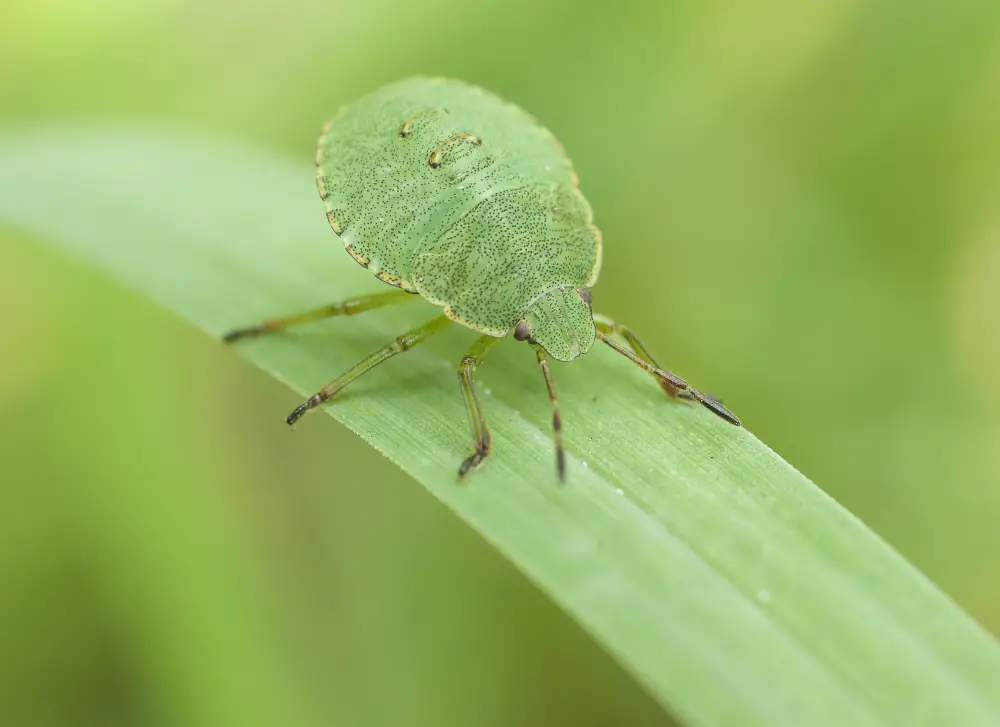
It is common for mealybugs, spider mites, aphids, and whiteflies to feed on the sap of spider plants.
With the exception of the spider mite, which is extremely small, most are easy to identify. Silk strands will be left behind if spider mites are present since they weave their webs while feeding. This indicates that spider mites are present.
If you notice that more than just the tips of your spider plant are becoming yellow or brown, you should check the plant for any signs of insect damage. Pests can be found in the top of the plant and on the undersides of the leaves.
The yellowing of the leaves is not limited to the leaf tips because bugs crawl all over the plant and drink the sap from different sections of the leaves as they feed on the plant. Another sign of a pest infestation is when the leaves of a spider plant begin to curl.
Most spider plant pests may be readily controlled by bringing the plant outside and bathing the leaves with a garden hose or spraying it in a shower.
Spraying water on live bugs is helpful, but because insects produce eggs, the technique will need to be repeated every few days to eliminate all of the insects from the plants, as water has little impact on unhatched eggs.
Because water alone is ineffective against spider mites, getting rid of them can be a little more challenging. Apply a solution consisting of neem oil that has been diluted with water at a rate of one tablespoon of neem oil to one quart of water once a week to your plant till the mites are gone.
Read more: Why Is My Spider Plant Turning Brown After Repotting?
Household Cleaning Chemicals
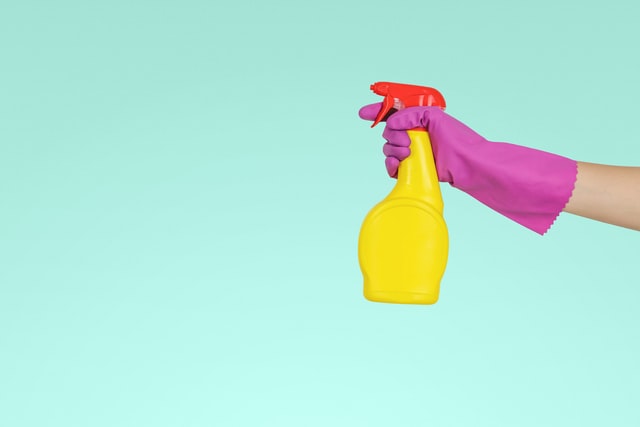
When you spray an aerosol close to a plant, it can kill it. Not because of the heat, but because aerosols spray at very cold temperatures. Several sprays, including fly and bee killer sprays, are utilized around the house.
Additionally, if you have a spider plant on a vanity and spray hairspray, it will likely land on the plant.
It is better to spray aerosols as far away from plants as possible, and the spider plant in particular should be kept well away from aerosols because it is an air plant and will take in anything that is in its surroundings. The greater the contamination of the air surrounding the plant, the more poisons it will absorb.
Sprays are the least complicated approach to be careful, since all you need to do is spray them far from your plant while using them. Do not, under any circumstances, grab for a can of fly spray the moment you notice flies in the area.
Although spider plants are good for cleaning the air, if you live in a city with a high level of air pollution, it may be advantageous to use an air purifier in addition to the plant so that it can take in cleaner air. This will allow the plant to do its job more effectively.
Read more: How Do You Revive A Dying Spider Plant?
Your Spider Plant’s Location
A spider plant has to be placed in an area that maintains a steady temperature and does not experience sudden shifts in either temperature or humidity.
To encourage good development, overwintering temperatures should be consistently above 35°F, and throughout the growing season, the room temperature for indoor spider plants should preferably be above 70°F. Try to keep the temperature at least above 50 degrees Fahrenheit even if there is a period of colder weather.
Spider plants do not do well in areas that are close to door openings, up against glass panes where the leaves can come into direct contact with frozen glass, or in areas that are too close to indoor heating or air conditioning appliances. These are the areas in which they are most likely to suffer from poor growth.
In the winter, it is possible to slowly kill plants by exposing them to brief bursts of freezing cold air caused by placing them too close to outdoor drafts. Alterations in temperature could be one of the factors contributing to the plant’s struggle, which can be identified by the appearance of yellowed or browning leaves on the plant.
Read more: Should I Cut Brown Tips Off Spider Plants?
In Conclusion
Why Are My Spider Plant Leaves Turning Yellow And Brown?
There are several factors to examine when determining what is causing your spider plant’s leaves to yellow or brown. Is it the climate (too hot or too chilly), maybe there’s a problem with overwatering or underwatering, or maybe the plant requires the soil to be leached of hazardous amounts of salt. Which of these factors is causing the problem?
Temperatures that are too high or too low, as well as humidity levels, can discolor the leaves of spider plants grown indoors.
The sap-sucking insects are the easiest reason to rule out first since you will be able to see them on the plant, and the symptom of it is distinct from that of the other ailments in that the yellowing and browning will impact the entirety of the foliage instead of just the tip.
The yellowing and browning of the leaf tips on spider plants can be used to determine the humidity, temperature, and ultimately the watering frequency. This is possible due to the fact that when spider plants are unable to obtain their nourishment from the soil, they will draw moisture from the tips of the leaves instead.
Unless harmful insects are feeding on the sap of the leaf, this is the part that will become brown before the remainder of the leaf. This is the reason why it will discolor first.
I hope that by reading this tutorial, you have been able to determine what is causing the yellowing of the leaves on your spider plant. Try not to lose hope with your spider plant! Spider plants are exceptionally tough, and if you give them the attention and care they need, you may get them to flourish once more.
Read more: How Can You Tell If A Spider Plant Is Overwatered?
Gardening gardener photo created by freepik – www.freepik.com
Bug photo created by wirestock – www.freepik.com
Photo by JESHOOTS.COM on Unsplash
Photo by Anne Nygård on Unsplash
